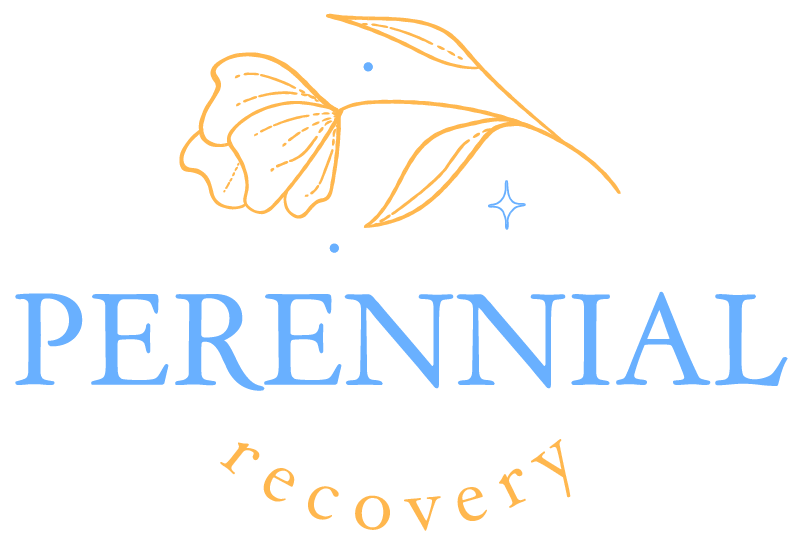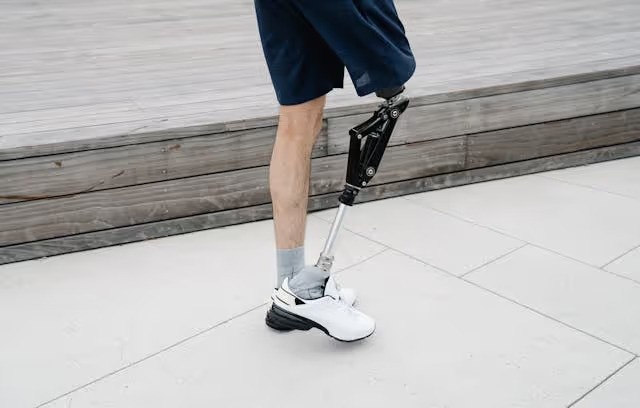Understanding the Connection
Drug abuse can have devastating effects on various aspects of a person’s health, including the potential loss of limbs. It is important to explore the link between drug abuse and limb loss, as well as understand how drugs can impact limb health.

Exploring the Link Between Drug Abuse and Limb Loss
Research has shown a clear association between drug abuse and an increased risk of limb loss. The abuse of certain substances can lead to severe health complications that may ultimately result in the need for limb amputation. This connection is particularly evident in cases involving long-term and chronic drug abuse.
The exact mechanisms by which drug abuse contributes to limb loss can vary depending on the type of drug involved. However, there are common factors that play a role in this process, such as the impact on circulatory health, tissue damage, and nerve function.
How Drugs Can Impact Limb Health
Different types of drugs can have detrimental effects on limb health, leading to an increased risk of limb loss. Let’s explore the impact of two major categories of drugs:
Opioids and Limb Health
Opioids, including prescription painkillers and illicit substances like heroin, can have severe consequences for limb health. These drugs can cause a condition known as ischemia, where blood flow to the limbs is significantly reduced. Ischemia can lead to tissue damage, infections, and ultimately, the need for amputation.
Studies have shown that individuals who abuse opioids are at a higher risk of developing peripheral arterial disease (PAD), a condition characterized by narrowed arteries and reduced blood flow to the limbs. PAD can result in chronic wounds, non-healing ulcers, and tissue death, making amputation a potential outcome.
Stimulants and Limb Damage
Stimulant drugs, such as cocaine and methamphetamine, can also have detrimental effects on limb health. These substances can cause vasoconstriction, which narrows the blood vessels and reduces blood flow to the extremities. Prolonged vasoconstriction can lead to tissue damage, ulcers, and infections that may necessitate limb amputation.
Furthermore, stimulant abuse can also increase the risk of engaging in risky behaviors, such as injection drug use. This can further contribute to the development of infections and complications, increasing the likelihood of limb loss.
Understanding the connection between drug abuse and limb loss is essential in raising awareness about the potential consequences of substance abuse. By recognizing the impact of drugs on limb health, individuals can make informed decisions and seek help to prevent further harm.
Types of Drugs Involved
When examining the connection between drug abuse and limb loss, it’s essential to understand the specific types of drugs that can impact limb health. Two common categories of drugs associated with limb complications are opioids and stimulants.
Opioids and Limb Health
Opioids, a class of drugs that include prescription painkillers and illegal substances like heroin, can have detrimental effects on limb health. Prolonged opioid use can lead to a condition called opioid-induced peripheral edema, which causes swelling in the limbs. This edema occurs due to the drug’s impact on the body’s circulatory system, resulting in fluid retention in the limbs.
Additionally, opioids can increase the risk of blood clot formation, known as deep vein thrombosis (DVT). Blood clots can obstruct the blood flow in the veins, potentially leading to tissue damage and even limb loss if left untreated. It’s crucial for individuals using opioids to monitor their limb health and seek medical attention if they experience any swelling, discoloration, or pain in their limbs.
Stimulants and Limb Damage
Stimulant drugs, such as cocaine and methamphetamine, can also contribute to limb damage. These drugs can cause significant vasoconstriction, narrowing the blood vessels and reducing blood flow to the extremities. The decreased blood supply can result in tissue ischemia (lack of oxygen) and subsequent tissue death.
In severe cases, chronic stimulant abuse can lead to a condition called necrotizing fasciitis, also known as flesh-eating bacteria syndrome. This life-threatening infection rapidly destroys the soft tissue in the affected area, often requiring emergency medical intervention, including limb amputation.
It’s essential to recognize the potential risks associated with opioid and stimulant abuse, as they can have devastating consequences on limb health. Seeking help and treatment for drug addiction is crucial not only for overall well-being but also for preserving limb function and preventing the loss of limbs.
By understanding the types of drugs involved and their impact on limb health, individuals can make informed decisions about their substance use and take appropriate measures to protect their limbs. Early intervention, medical assistance, and a focus on promoting a healthy lifestyle can significantly reduce the risk of limb complications associated with drug abuse.
Effects on the Body
Drug abuse can have severe consequences for the body, including detrimental effects on limb health. Two significant ways in which drug abuse impacts the body and can lead to limb loss are circulatory issues and tissue damage, as well as nerve damage and increased amputation risks.
Circulatory Issues and Tissue Damage
Drug abuse can have a profound impact on the circulatory system, leading to reduced blood flow to the extremities. This compromised blood flow can result in various circulatory issues, such as peripheral artery disease (PAD) and deep vein thrombosis (DVT). These conditions can cause blockages or narrowing of blood vessels, limiting the oxygen and nutrient supply to the tissues in the limbs.

In addition to circulatory issues, drug abuse can also cause direct tissue damage. Certain drugs, such as opioids, can constrict blood vessels, reducing blood flow to the tissues. Prolonged restriction of blood supply can lead to tissue death (necrosis) and ulceration, increasing the risk of infections and complications.
Nerve Damage and Amputation Risks
Another significant consequence of drug abuse is nerve damage, also known as peripheral neuropathy. Drugs, especially stimulants, can cause damage to the peripheral nerves that carry signals between the central nervous system and the limbs. Nerve damage can result in pain, numbness, tingling, and muscle weakness in the affected limbs.

When nerve damage progresses, it can lead to further complications, including an increased risk of amputation. Numbness and loss of sensation in the limbs can make individuals more susceptible to injuries or infections that go unnoticed, potentially leading to severe tissue damage and the need for amputation.
Understanding the effects of drug abuse on the body, particularly circulatory issues, tissue damage, nerve damage, and increased amputation risks, highlights the importance of seeking help and treatment for drug addiction. Early intervention and appropriate medical assistance can not only prevent further harm to the limbs but also improve overall health outcomes. Emphasizing preventive measures and promoting a healthy lifestyle can play a crucial role in reducing the risk of limb complications associated with drug abuse.
Risk Factors and Warning Signs
Understanding the risk factors associated with drug abuse and recognizing the warning signs of limb complications are crucial steps in addressing the potential loss of limbs caused by drug abuse.
Identifying High-Risk Behaviors
Certain behaviors and circumstances may increase the risk of limb complications resulting from drug abuse. It’s important to be aware of these high-risk behaviors and take proactive measures to prevent harm. Some common high-risk behaviors include:
- Intravenous (IV) drug use: The use of injectable drugs like heroin or methamphetamine significantly increases the risk of limb-related complications due to the potential for infections and damage to blood vessels and soft tissues.
- Sharing needles or drug paraphernalia: Sharing needles or other drug-related equipment can lead to the transmission of bloodborne infections, such as HIV or hepatitis C, which can damage the circulatory system and impact limb health.
- Prolonged substance abuse: Engaging in long-term substance abuse can have detrimental effects on overall health, including the circulatory system, nerves, and tissues, which may result in limb complications.
- Poor hygiene and wound care: Neglecting proper hygiene practices and failing to care for wounds or infections can increase the risk of limb-related complications, including infections and tissue damage.
By identifying these high-risk behaviors, individuals can take steps to minimize their risk and seek appropriate help and support.
Recognizing Symptoms of Limb Complications
Recognizing the symptoms of limb complications can help individuals seek medical assistance promptly, potentially preventing further damage or loss. Some common symptoms of limb complications associated with drug abuse include:
- Persistent pain or discomfort: Chronic or persistent pain in the limbs, especially when associated with swelling or redness, may indicate circulatory problems, nerve damage, or infections.
- Changes in skin color or texture: Discoloration, bruising, or dry, scaly skin on the limbs may be signs of compromised blood flow or tissue damage.
- Slow healing or non-healing wounds: Wounds that take longer than usual to heal or do not heal at all may be indicative of circulatory issues, impaired immune function, or poor overall health.
- Numbness, tingling, or weakness: Sensory changes, such as numbness, tingling, or weakness in the limbs, can suggest nerve damage or compression.
It is important to note that these symptoms may vary depending on the specific drug abused and individual circumstances. If any of these symptoms are experienced, it is crucial to seek immediate medical attention to prevent further complications.
By being aware of the risk factors and recognizing the warning signs associated with limb complications resulting from drug abuse, individuals can take proactive steps to protect their limb health and seek appropriate treatment and support.
Seeking Help and Treatment
When it comes to drug abuse and its potential consequences on limb health, seeking help and treatment is of utmost importance. Timely intervention can not only prevent further damage but also aid in the recovery of limb health. In this section, we will discuss the importance of seeking medical assistance and the treatment options available for limb health recovery.
Importance of Seeking Medical Assistance
If you or someone you know is struggling with drug abuse and experiencing limb complications, it is crucial to seek medical assistance promptly. Medical professionals, including doctors, addiction specialists, and rehabilitation centers, play a vital role in providing the necessary care and support.
Medical assistance is essential for several reasons. Firstly, healthcare professionals can assess the extent of limb damage and determine the appropriate course of action. They can conduct thorough examinations, order diagnostic tests, and develop individualized treatment plans based on the specific needs of the patient.
Secondly, seeking medical help allows for early intervention, which can prevent further deterioration of limb health. Through proper medical guidance, individuals can receive the necessary treatments and interventions to minimize the risk of limb loss and improve overall limb function.
Lastly, healthcare professionals can provide valuable resources and support systems to aid in the recovery process. They can connect patients with rehabilitation programs, counseling services, and support groups that specialize in substance abuse recovery and limb health management.
Treatment Options for Limb Health Recovery
The treatment options for limb health recovery vary depending on the specific circumstances and severity of the limb complications. Some common treatment approaches include:
- Medication-Assisted Treatment (MAT): For individuals struggling with opioid abuse and experiencing limb complications, medication-assisted treatment may be recommended. This approach combines medications, such as methadone or buprenorphine, with behavioral therapies to help manage opioid addiction while addressing limb health concerns.
- Surgical Interventions: In cases where limb damage is severe and irreversible, surgical interventions may be necessary. These procedures aim to remove damaged tissues, restore blood flow, or stabilize the limb to prevent further deterioration. Surgical treatments can range from debridement and reconstructive procedures to limb amputation in extreme cases.
- Rehabilitation and Physical Therapy: Rehabilitation and physical therapy play a crucial role in the recovery and rehabilitation of individuals with limb complications. These therapies focus on improving strength, mobility, and function through targeted exercises, assistive devices, and adaptive techniques.
- Psychological Support: Drug abuse and limb complications can have a significant impact on an individual’s mental health. Seeking psychological support through counseling or therapy can help address the emotional and psychological aspects of the recovery process. It can also provide coping mechanisms and strategies to navigate the challenges associated with drug abuse and limb health issues.
It is important to note that the specific treatment approach may vary depending on individual circumstances, medical recommendations, and the type of drug abuse involved. Seeking professional medical advice is crucial to determine the most appropriate course of action for limb health recovery.
By seeking help and following the recommended treatment options, individuals can take significant steps towards reclaiming their limb health and overall well-being. It is never too late to reach out for assistance and embark on the journey to recovery.
Preventing Limb Loss
When it comes to drug abuse and the potential loss of limbs, prevention is key. By implementing strategies to prevent limb complications and promoting a healthy lifestyle, individuals can reduce the risks associated with drug abuse and preserve their limb health.
Strategies for Preventing Limb Complications
- Education and Awareness: Promote education and awareness campaigns that highlight the dangers and consequences of drug abuse on limb health. By raising awareness, individuals can make informed decisions and understand the potential risks involved.
- Early Intervention and Treatment: Encourage early intervention and treatment for drug abuse. Timely access to professional help and support can help individuals overcome addiction and reduce the chances of long-term limb complications.
- Safe Needle and Drug Use Practices: For individuals who inject drugs, promoting safe needle practices is crucial in preventing infections and reducing the risk of limb damage. Providing access to clean needles and offering harm reduction programs can significantly contribute to limb health preservation.
- Regular Health Check-ups: Encourage individuals with a history of drug abuse to undergo regular health check-ups. Routine examinations can help identify any early signs of limb complications, allowing for prompt intervention and treatment.
- Supportive Rehabilitation Programs: Implement comprehensive rehabilitation programs that focus on physical, emotional, and social well-being. These programs can help individuals rebuild their lives, regain their mobility, and prevent further limb damage.
Promoting a Healthy Lifestyle
In addition to strategies aimed specifically at preventing limb complications, promoting a healthy lifestyle is vital for overall well-being and limb health preservation. Some key steps to consider include:
- Nutritious Diet: Encourage a well-balanced diet rich in vitamins, minerals, and nutrients. A healthy diet promotes proper circulation, tissue repair, and overall limb health.
- Regular Exercise: Advocate for regular exercise routines that improve cardiovascular health and strengthen muscles. Exercise promotes blood flow and helps maintain optimal limb function.
- Avoidance of Substance Abuse: Emphasize the importance of avoiding substance abuse altogether. By steering clear of drugs, individuals can protect their limbs and overall health from the damaging effects of addiction.
- Good Hygiene Practices: Promote good hygiene practices, particularly for individuals who inject drugs. Cleanliness reduces the risk of infections and other complications that can lead to limb damage.
- Stress Management: Encourage stress management techniques such as meditation, counseling, or engaging in hobbies. Stress can contribute to substance abuse, and by effectively managing stress, individuals can reduce the likelihood of engaging in harmful behaviors.
By implementing these strategies and promoting a healthy lifestyle, individuals can take proactive steps to prevent limb complications and maintain their overall well-being. It is crucial to remember that prevention is always better than dealing with the consequences of substance abuse on limb health.
Sources
https://americanaddictioncenters.org/health-complications-addiction/muscular-system
https://mpowerwellness.com/does-drug-abuse-cause-limb-loss/
https://pubmed.ncbi.nlm.nih.gov/2262503/




